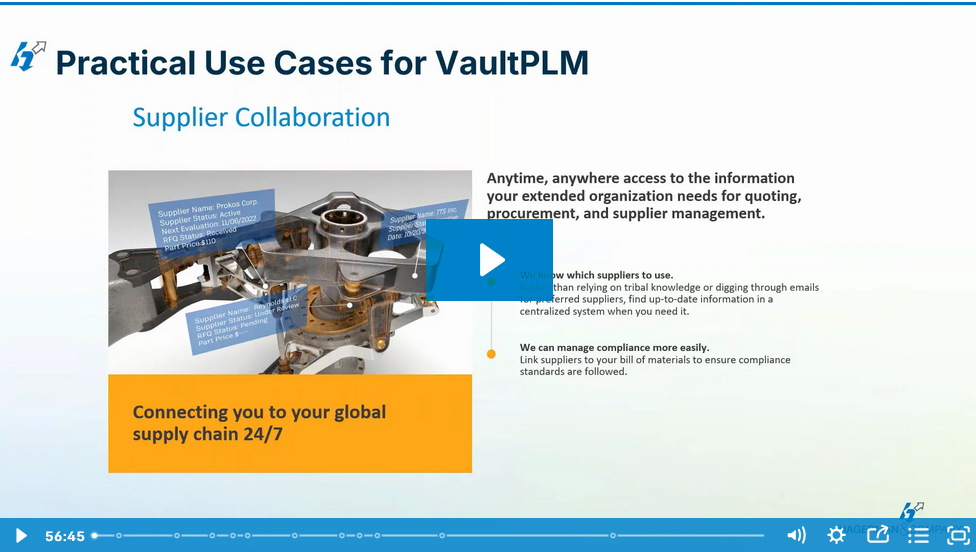Efficient data management can lead to significant wins in design and engineering. By streamlining processes and ensuring that all files are easily accessible and well-organized, professionals can save valuable hours that might otherwise be spent searching for CAD file versions. A few instances of miscommunication might seem trivial, but their repeated occurrence creates operational roadblocks. Delays in approving layouts and tracking as-built designs can slow down project completions and hurt productivity ratings.
These inefficiencies don't always stem from a lack of technology. The McKinsey Technology Council reports that investments in enterprise-level technology remain robust, with a staggering economic value of over $1 trillion. However, the bigger issue lies in the underutilization of these investments. Advanced 3D CAD modeling software only benefits teams when business leaders implement proper training on the effective use of these tools.
Implementing best practices in CAD file management requires managerial oversight to guide individual contributors in making the right decisions. A strategic approach that accelerates workflows while maintaining the company’s quality standards is essential. Let’s discuss all the essential CAD file management practices to help you mitigate risks, improve collaboration, and gain a competitive edge in the industry.
8 CAD File Management Best Practices You Should Adopt
1. Implement a Standardized Naming Convention
Document misplacement often stems from inconsistent naming conventions rather than accidental deletions. CAD managers can prevent this confusion by enforcing a consistent naming system. Following a standardized approach enables design and engineering professionals, along with their clients, to quickly retrieve essential documents.
Typical naming conventions should employ simple yet descriptive labels, such as ProjectCode_Component_VersionNumber (e.g., PROJ123_ValveDesign_V2). However, manually adding version numbers applies only to unmanaged software. Modern engineering document management solutions like Vault need a custom naming convention since they maintain file versions automatically.
Contributors can add incremental numbers to identify parts. For example: ADC-158595. The Component in this example should still consist of descriptive verbiage to support the easy retrieval of specific part designs.
2. Use Version Control Systems
Design and engineering professionals frequently revise model designs. Modifications occur multiple times throughout a project lifecycle, including updates to as-built models. Individual contributors might find it challenging to track design updates manually as a database grows. A lack of management eventually causes confusion.
CAD managers can facilitate easy retrieval of the complete modification history of any component or part by implementing a version control system (VCS).
For instance, multiple engineers work on different aspects of building designs in large-scale construction projects. A VCS allows contributors to make updates without overwriting existing drafts. The team can trace issues with specific designs to identify when and by whom the changes were made. This process expedites troubleshooting and ensures accountability throughout the design process.
3. Organize Files into Logical Folders and Subfolders
Locating specific files in a cluttered design and engineering directory is time-consuming and inefficient. Each project undergoes multiple revisions, updates, and modifications. Individual contributors may struggle with file retrieval even with proper file naming conventions. To help address this issue, CAD managers could consider designing clear categories and subcategories for each project, which can streamline the process and make retrieval more efficient.
There is no universally accepted categorization system—just strive to create a logical flow of information. For simplicity, organize files in a nested manner, e.g., Project, Phase, and Component. Likewise, use concise folder names that are descriptive enough to define contents without ambiguity. This approach enhances organization and improves project efficiency.
4. Regularly Backup CAD Files
Losing critical design data due to system failures or accidental deletions is a severe yet common disaster. Individual contributors who are focused on their immediate tasks might forget to make design copies at times. The best solution is for managers to schedule regular automated backups through reliable CAD management systems like Autodesk Vault.
Routine backups guarantee that all design versions are secure and recoverable. Knowing that the data is safely backed up allows teams to concentrate on their work without the constant worry of potential data loss.
5. Utilize Metadata and File Properties
The lack of context and detail in file names often leads to errors during retrieval. It’s especially prevalent when collaborating with parties who did not create the documents themselves. CAD managers can simplify data retrieval for their engineers and third-party partners by setting descriptive metadata and file properties. Users can easily locate and identify files that have detailed descriptions complete with the necessary keywords and tags.
This practice allows design professionals, even those from different departments, to collaborate more efficiently on shared projects. Contributors can retrieve the necessary documents without the need for constant double-checking.
6. Control Access and Permissions
Poor CAD file system permissions often result in unauthorized modifications, deletions, and potential data breaches. Tracking the cause of these changes can be challenging.
CAD managers can restrict file access by defining clear access levels and permissions. Determine who can perform specific actions on files and only grant access through company-provided accounts. Efficient implementation of these controls maintains accountability across CAD file systems and reduces the risk of unauthorized changes, whether intentional or accidental.
7. Document Revision Histories
The lack of transparency and traceability when managing CAD projects often leads to confusion and operational roadblocks. CAD managers require a clear record of modifications to understand the evolution of a design and hold individual contributors accountable for their work.
Maintaining detailed revision histories within CAD files is essential for this reason. Design and engineering professionals should document all modifications, including the reasons behind them. A well-documented development process eliminates the friction associated with tracing design iterations, ensuring clarity and accountability.
8. Integrate CAD with Project Management Tools
Disjointed workflows and misalignment with project timelines hinder collaboration in design and engineering projects. Individual contributors might get confused when identifying who is responsible for specific tasks or whom to contact for updates.
CAD managers can address these operational roadblocks by syncing CAD files with project management tools. Integration facilitates communication and places all project information on one platform, enabling all parties to track progress in real-time and update project statuses more efficiently.
Maximize Efficiency with a Document Management Expert
Effectively managing complex CAD files and maintaining consistent organization can be challenging for design and engineering teams. Offloading the process to a document management expert can help streamline the process. Here are the benefits of working with specialists:
Customized Software Implementation
Adopting generic design systems often leads to inefficiencies and errors, as they rarely meet the specialized needs of design projects. Customizing these systems can be time-consuming and complex.
Address these roadblocks by working with document management experts. They’ll implement Autodesk software solutions tailored to your organization’s specific needs, streamline your workflow, and align with project demands. Offload software setup and configuration so that you can focus on core roles.
Training Programs
Individual contributors need comprehensive training to maximize the potential of modern Autodesk products. Proficiency in these complex platforms allows them to apply more advanced design and engineering principles effectively.
Document management experts can offer specialized training programs tailored to different roles within the organization, ensuring that all contributors, from CAD technicians to project managers, are proficient in using Autodesk products. Ideally, courses should cover best practices for file management, data integrity, and collaboration.
Technical Support and Troubleshooting
Unexpected technical glitches can halt your team’s progress and disrupt operations for hours or days if not promptly addressed.
Ready access to expert technical support allows design and engineering professionals to resolve these roadblocks quickly. Ongoing support and maintenance provide the guarantee that your systems run smoothly. Managers should offload troubleshooting tasks related to software performance, file corruption, and other technical challenges so that their teams can focus on core responsibilities.
Development of Custom Solutions
Design and engineering firms have unique needs depending on their specific industry and project requirements. Experimenting with various solutions can waste valuable time and resources.
CAD managers can achieve custom solutions more efficiently by working with a document management expert. Professionals can develop custom scripts to automate routine tasks, enhance data visualization, and streamline collaboration among team members. A tailored approach aligns solutions with the firm’s unique needs.
Enhancing Efficiency with Professional CAD File Management
Even the most well-designed organizational system requires consistent guidelines.
CAD managers should implement best practices such as standardizing naming conventions, integrating CAD with project management tools, and organizing files into logical folders. Efficient CAD file management is crucial in any design and engineering firm.
Managing the intricacies of CAD data can be challenging. Partnering with Hagerman's team of professionals facilitates the seamless transition to a more efficient, secure, and productive environment. Save time and money by preventing designers from overwriting or altering library parts, reducing costly errors, and streamlining workflows. Book a consultation to learn about our professional CAD management services.




Comments